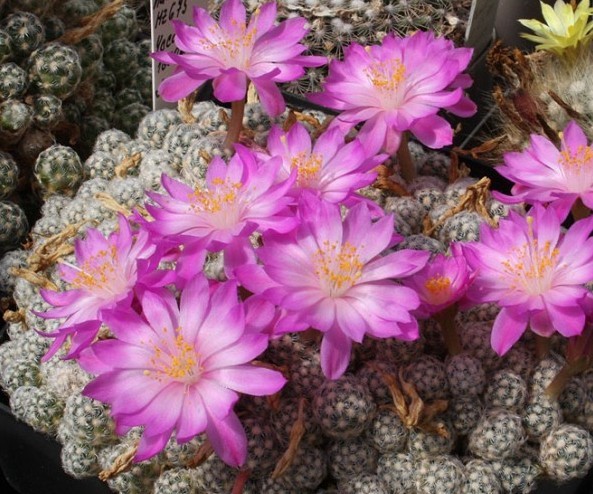Jicari
(Mammillaria saboae)

Description
Mammillaria saboae is a biznaga of the cactus family (Cactaceae). The word Mammillaria comes from the Latin mamila, nipple or teat and from -aria, which possesses, carries, that is to say, 'which carries nipples', referring to tubers. It is a biznaga of the Cacteae tribe, Cactaceae family. It is a cactus that has branched growth. Its stems are ovoid in shape, 1 to 2 cm tall and in diameter. The stem protuberances (tubers) are green and have watery juice, the space between them (axils) are bare. The sites where the spines develop are called areoles, in this species they have an elliptical shape, with more or less 17 to 25 spines, rarely 1 of them is located in the center of the areola (central) they are regularly white spines with the yellow base (radials). The flowers are large for the size of the stem and are funnel-shaped, about 40 mm in length and diameter, and are pink in color. The fruits are globose and are immersed in the stem and the seeds are black. Due to its characteristics, this species has been removed from its habitat to be traded illegally, although there is no quantification of the damage this has caused to its population. It is endemic to Mexico and is considered in the category of threatened (A) by the Official Mexican Standard 059. It is considered Least Concern (LC) on the IUCN red list.
Taxonomic tree:







